British soldiers may know the terms “doing your dhobi” (laundry) and “dhobi dust” (detergent) – but they may not be aware of these terms’ origins.
A photographer friend recently spent several hours negotiating, on behalf of a small group of photographers, entry into a local “dhobi khana” or “dhobi ghat” – i.e. a community where local dhobis live and do their work.
Dhobis are, literally, “washers” – comprising an occupational caste in India and Pakistan of people who earn their livelihood washing clothing and linen. At the Dhobi khana in Chetpet, India, as in most other places (only Mumbai has a larger dhobi khana), clothing, uniforms, and linens and sheets from local hotels are literally beaten on wet stones, or soaked in cement tubs, where they will be “stomped” clean.
The dhobi khana at Chetpet consists of sets of basins and troughs, grouped together as in the photo below, with covered drying areas, repeated at least 4 or 5 times, although I did not have the opportunity to see the entire facility. Surrounding the entire perimeter are living quarters and work “cubbyholes”, where people iron and fold the clothes. A multi-storey building is also on the grounds, where access to the roof and balconies provides additional space for drying large items. Throughout the morning, there was a constant coming and going of privately-owned autorickshaws, or “tuktuks”, carrying loads to and from vendors.
Working as a dhobi is strenuous, difficult work. Yet it’s also equal opportunity work – men and women were employed in almost equal numbers, with some of the women who weren’t washing clothes – particularly older women – looking after the children living in the place. It’s also a dying profession, and the dhobis worry what they will do if this way of life disappears. According to the sparing information available online about this way of life, the individual dhobis establish contracts with local hotels and other businesses with regular washing needs; and because labor is relatively cheap in India, it is still financially worthwhile to take bedlinens to the dhobi khana for cleaning, rather than a machine laundry. For now, anyway.
Modernization, combined with increasing competition for a limited water supply, threaten their way of life. Although people are not bound to the caste system, this job, like many others, is typically passed down from one generation to the next. I was told that between 500 and 700 people work here.
The dhobi khana in Chetpet was built in 1902 by the British. One imagines that’s where the military and the aristocracy had their washing done. Much of what is there today still dates from over 100 years ago. During my visit, I brought a handful of older cameras and film, as I wanted to capture something of the mood and history of the place. I used a Kodak Monitor folding camera from the early 1940s, with Kodak Portra film that expired about ten years ago:
The lady above is preparing a meal, the way it has presumably been done for a century. There is electricity in the place. Ironing is also done with irons that hold hot embers.
The square photos you see throughout this post are from an Argus Seventy-five, from the 1960s, with some old Ilford ASA50 film (date unknown). I also snapped a few shots with an old folding camera made about 95 years ago, a Kodak No. 2A folding autographic, box camera that Kodak gave away free to kids turning 12 in 1930, loaded with film that expired in 1973:
I was a little disappointed with the outcome – most of the other photographers had much more impressive shots. But it was a difficult place to get inspired. On the Indian streets, people are eager to be photographed; but here, it felt a little like we were being tolerated. Maybe they get a lot of photographers, but nothing is done to improve their future – it’s difficult to know. But like anywhere, the kids were happy to have their pictures taken:
Our visit to the dhobi khana was a fascinating window into another way of life – one that may not be around much longer. What will happen to the dhobis of chetpet if their services are no longer needed?
To see a short, award-winning video about this place, click here. The subtitles are a bit tough to read. To see some much better photos of the place, click here.

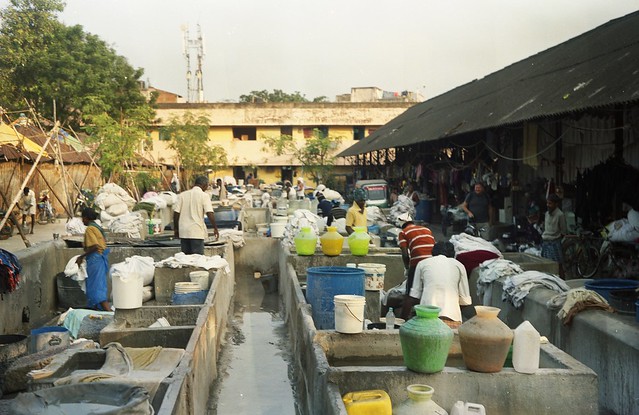
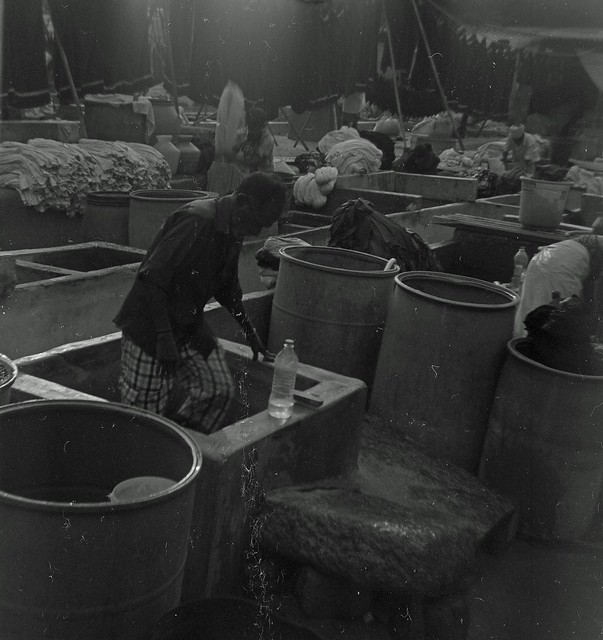


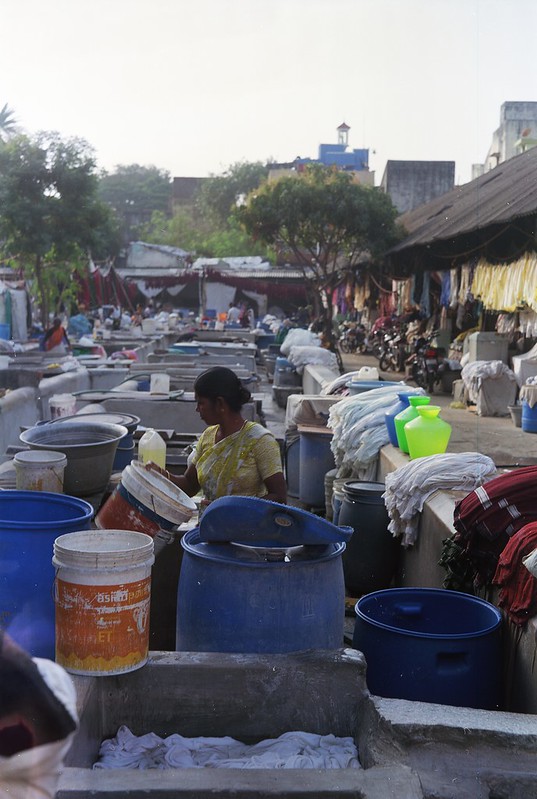
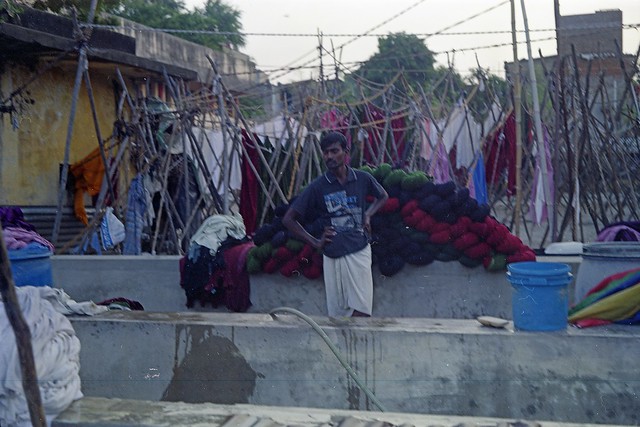
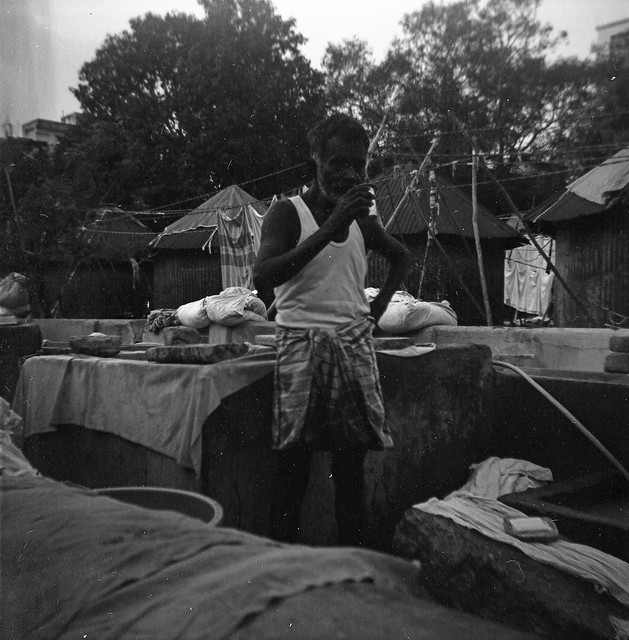
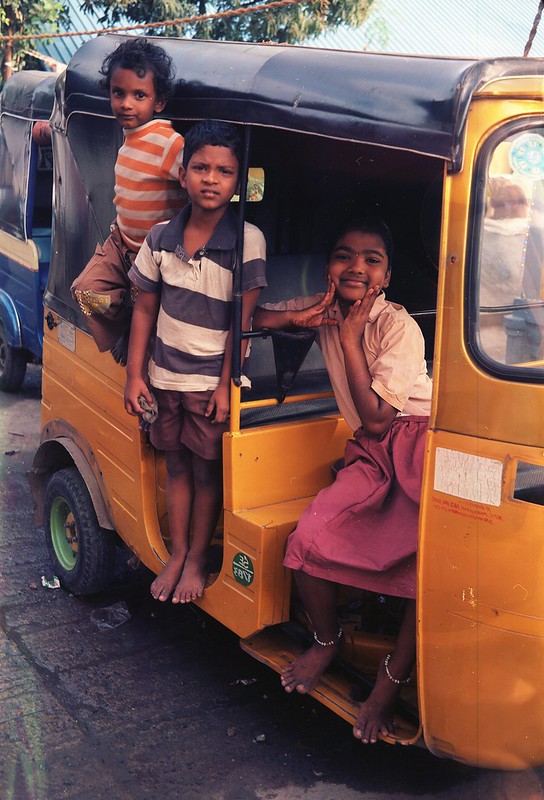
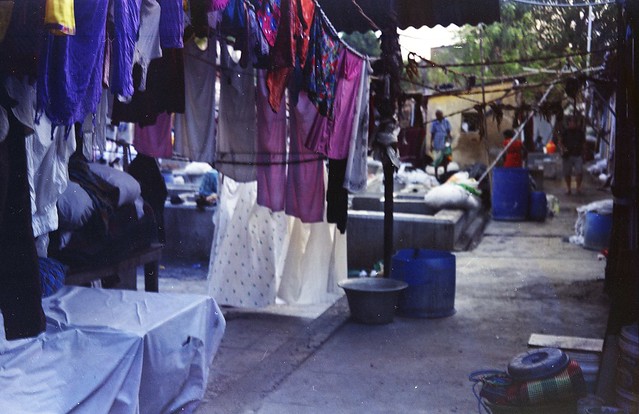

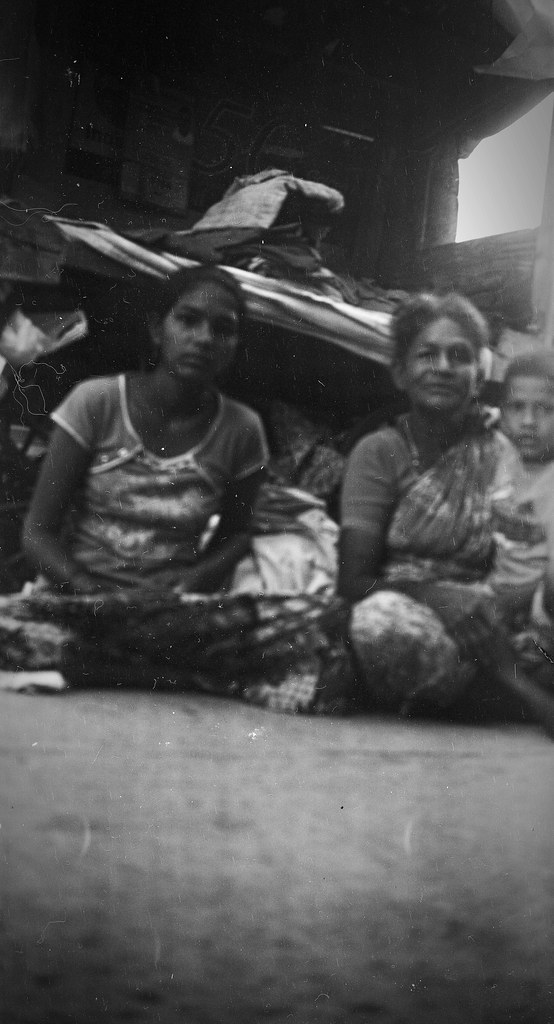
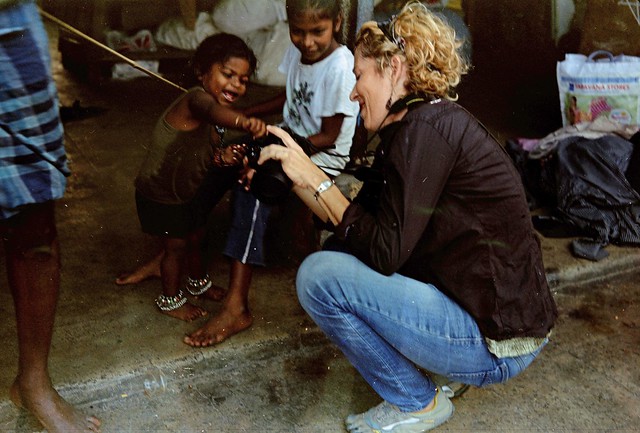
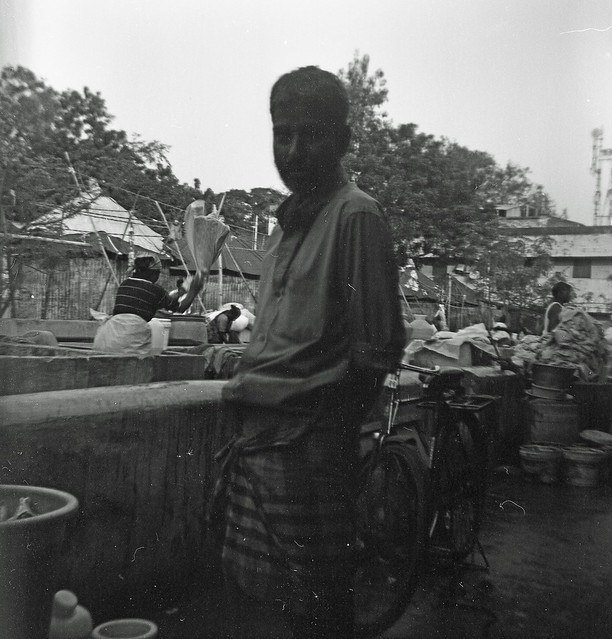
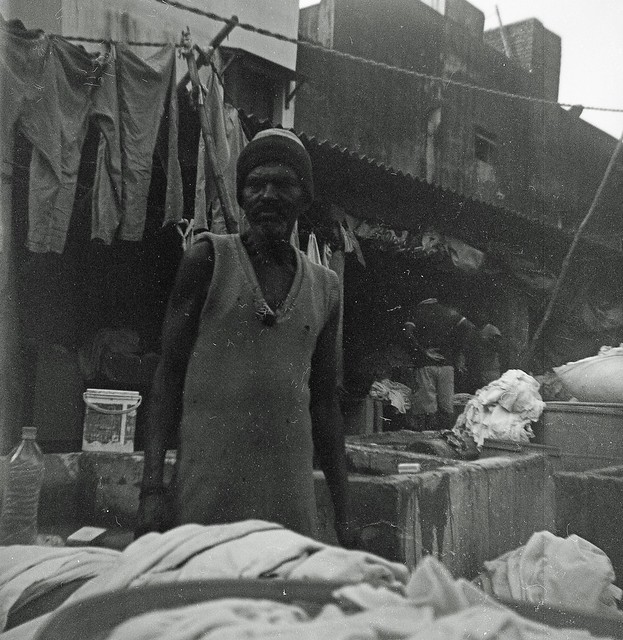

One Response to Documenting the Dhobis